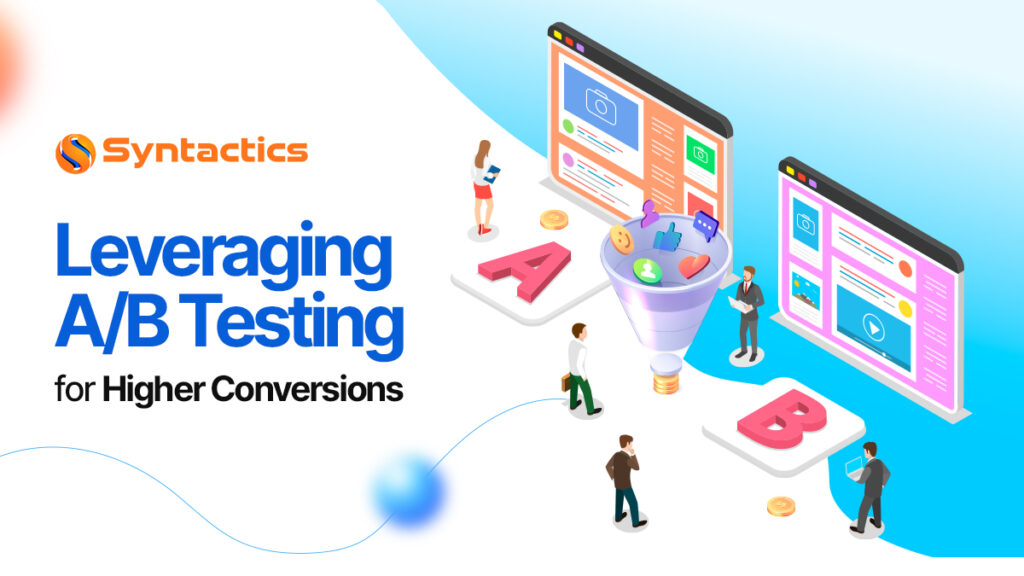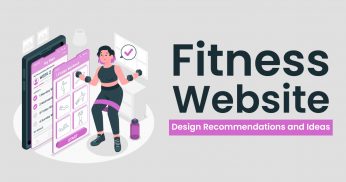
Leveraging A/B Testing for Higher Conversions
An effective landing page convinces users to perform a desired action. If you’re not satisfied with your results, A/B testing can be the key to boosting your conversion rates. Landing page development services conduct A/B testing to help you determine which element variations drive better conversions.
There’s no specific formula for creating a good landing page since each business has different goals and audiences. Fortunately, A/B testing lets you improve your page so you can consistently hit the mark and gain even more landing page conversions.

Source: HubSpot.
Understanding A/B Testing
In website development, A/B testing involves comparing two variations of a web page element to see which one users resonate with the most. It helps speed up website development and landing page optimization by eliminating the guesswork of identifying user preferences.
You can use A/B testing when creating a conversion-optimized landing page. This strategy helps you improve the page design and elements so it convinces visitors to take the next steps in the customer journey.
For instance, testing revealed that adding a video to your landing page convinces users to buy your products. According to Video Marketing Statistics, 79% of people favor watching product videos rather than reading about them. That’s because videos take less time and effort to digest, so they keep their attention long enough to learn the benefits of buying your goods.
Landing page experts commonly test the following elements:
- Headlines;
- Subheadings;
- Images and graphics;
- Video content;
- Page layout and design;
- Testimonials and social proof;
- Call-to-Action (CTA) buttons, and
- Forms and fields.
Once you have an optimized landing page, your business can experience the following benefits:
- Enhanced User Experience (UX);
- Increased revenue;
- Optimized Return On Investment (ROI);
- Risk mitigation, and
- Continuous improvement.
Leveraging A/B Testing for Higher Conversions
Identify Key Conversion Metrics
A/B testing your landing page would be unproductive if you don’t have any metrics to determine its success. Before conducting tests, make sure to choose Key Performance Indicators (KPIs) that directly reflect your business goals.
You might be tempted to track only your conversion rates, but it’s best to consider other metrics as well. This strategy will give you a better picture of how to optimize your landing page.
Other metrics that landing page experts can keep an eye on include:
- Click-Through Rates (CTRs);
- Retention rates;
- Scroll depth;
- Page views;
- Average session duration, and
- Abandonment rates.

Source: Statista.
For instance, you want to increase the conversion rate of your skincare business’ landing page by changing the CTA button to “Buy Now.” The key conversion metrics you’ll want to monitor during testing can include:
- Average Order Value (AOV);
- CTR rate, and
- Customer Lifetime Value (CLV).
To ensure your A/B test is successful, make sure to use data from valuable sources like Google Analytics 4, surveys, and customer interviews. Keep in mind that some metrics are easier to track while others fluctuate. Consider the availability and reliability of data when identifying your metrics to ensure the validity of your KPIs.
Planning and Hypothesis Formulation
Next, you’ll need to plan your landing page A/B testing process. This stage includes:
- Defining your objectives;
- Selecting an element to test, and
- Formulating a hypothesis.
Defining your objectives helps identify the reason for doing the test. You can do this by determining your conversion goals, so you know what you want to achieve. Some examples of conversion goals include:
- Subscribing to your newsletter;
- Signing up for your webinar, or
- Purchasing your products.

Source: Blogging Wizard.
To get the most out of A/B testing, you must test one element at a time. Simultaneously testing multiple features will affect the results since you’ll need to track too many metrics.
Once you’ve identified the landing page element you want to test, formulate a hypothesis of what will happen if you tweak it. This hypothesis should be clear and specific since it will guide your changes. For instance, you may hypothesize that:
- “Changing the CTA button to ‘Buy Now’ will persuade more customers to buy your products, thus increasing the conversion rate by 5%,”
- “Adding a prominent CTA button Above The Fold (ATF) will increase the conversion rate by 20%,” or
- “Simplifying the form field to a single-column layout will increase completion rate by 10%.”
Analyze Test Results
After running the test and collecting the results, the next step is to analyze them. But, before you can do this, make sure to check that your test has achieved statistical significance. This significance ensures that the difference between the two landing page variants didn’t happen by chance.
To confirm this, developers can use statistical tests like the chi-square or t-test. A good statistical significance threshold should be 95%. Once your test reaches this, landing page experts can then compare the performance of the control and variation. They can also utilize A/B testing tools, like Google Optimize or Optimizely, to make the process easier.
For instance, after testing your landing page for two weeks, the variant with the “Buy Now” CTA button garnered higher results based on the conversion metrics. Hence, there’s no doubt it’s more effective for persuading customers to buy your products.
Iterative Optimization and Continuous Testing
Once you determine the winning variation, landing page development services can implement the changes. In this case, it’s to change your page’s CTA button to “Buy Now.” Don’t forget to continue monitoring your landing page’s performance so you can quickly refine it whenever necessary.

Source: Startup Bonsai.
Keep in mind that A/B testing your landing page isn’t just a one-time process. Audiences aren’t static, so conducting frequent tests will help you keep up with their changing needs. As a result, your conversion rates will stay high.
Overcoming Challenges in A/B Testing
When done right, A/B testing can significantly boost your landing page’s conversions and sales. However, you may run into challenges that can affect the testing process and results. Here are A/B testing challenges that landing page experts commonly experience:
- Identifying elements to test. Choosing the wrong elements to test can result in inconclusive or ineffective results. To avoid this, make sure to use elements that will likely influence user behavior and conversion rates, like headlines, CTA buttons, and page layout.
- Test duration. It can be difficult to determine how long you should run your tests to ensure the results are reliable and statistically significant. The right test duration can depend on several factors, like the amount of traffic and your conversion goals. Thus, it’s best to run your test for at least a week to capture different user behavior variations.
- Biases towards control or variants. Having biases over the control or variant can skew the results. To prevent this, avoid making decisions based on emotions and intuition and stick to your data and hypothesis instead.

Source: Gitnux.
Future Trends in A/B Testing
Keeping up with A/B testing trends will allow you to improve your landing page optimization strategies. Here are a few trends landing page development services and experts are looking out for:
- Privacy-centric testing. With the growing concern about privacy, website owners and landing page experts will focus on data transparency. They’ll let their users know how they’ll use their data during testing. As a result, your landing page can reap the benefits of A/B testing while strengthening your users’ trust.
- Faster iterations. Seasoned A/B testers know that the secret to getting accurate results is to give your test plenty of time to run. But for 2024, the trend is to provide faster iterations. That’s because the quicker you can implement the changes, the faster your landing page can reap the benefits. Thus, the trick is to find the perfect balance between speed and precision so that A/B testers don’t skew the results.
- Continued Artificial Intelligence (AI) integrations. AI can undoubtedly make A/B testing more efficient and cost-effective. It can process and analyze large amounts of data quickly, so it’s predicted that more A/B testers will utilize AI this year.
However, it’s also important to acknowledge AI’s limitations, like algorithm bias or inaccurate result interpretations. Thus, it’s important to maintain a balance between automation and human expertise for reliable results.
Leverage A/B Testing to Improve Your Landing Page!
If you want to convince visitors to convert, consider A/B testing your landing page. Landing page experts can use A/B tests to determine which element variations your customers resonate with the most. As a result, your page will become so enticing that they’ll want to subscribe to your mailing list or buy your products.
However, your audience’s needs and pain points are ever-changing, so A/B tests should be done regularly to keep your conversion rates up! Count on landing page experts to conduct frequent testing while development services adjust your page to better convince customers to do conversion actions.


















Comment 0